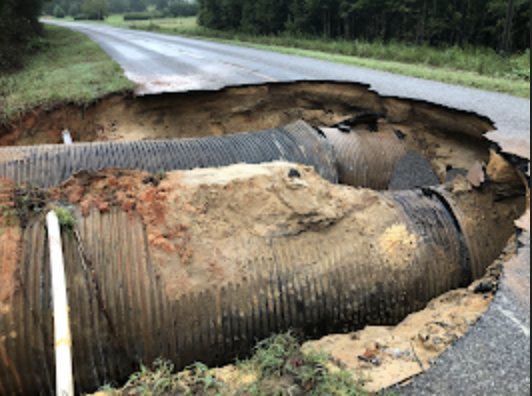Alcohol leading cause of tean accidents
Published 12:00 am Wednesday, June 28, 2000
Managing Editor
Most experts agree that underage drinking is a significant factor in accidents involving young drivers. In fact, statistics show that out of 5,477 fatal accidents involving young people ages 15 to 20 in 1997, 21 percent of the young drivers had been drinking.
And while most states have raised the legal age limit required for purchasing alcohol to 21, the number of teens and young adults involved in alcohol related fatal accidents continues to increase.
Jim Rhodes is the Alcoholic Beverage Control enforcement officer for Butler and Conecuh counties. It is his job to enforce the state's laws regarding the sale of alcoholic beverages in the area, and he says it is getting increasingly tougher to stop teens from gaining access to alcohol.
"Teenagers using alcohol is a problem in Butler County and there are a lot of kids that have access to it," Rhodes said. "But the biggest problem is not underage people being allowed to purchase alcohol, but people who are of legal age purchasing it for them. That is harder to control."
Rhodes said his office routinely uses minor operatives that attempt to purchase alcohol from licensed retail locations. He said the youths that work for the ABC Board must be honest with the clerks, and provide Identification when asked, but if they are allowed to purchase alcohol the clerk can get in a lot of trouble.
A first offense carries with it a $400 price tag in fines and court costs for the clerk, and a $500 first offense administrative fine for the establishment. Rhodes said for second and third offenses, the fines increase to $750 and $1,000 respectively. A third offense will also result in a suspension of the establishment's license to sell alcohol.
Rhodes said these "minor details" are done randomly throughout the area, but also pay special attention to locations about which his office has received complaints. The effort, he said, helps control teenage access to alcohol, but does not stop it.
Although the consumption of alcohol by teenagers is a concern of its own, what teenagers are doing behind the wheel of a car, under the influence of alcohol, is an even larger one.
All 50 states and the District of Columbia have established lower blood alcohol thresholds for young drivers in an effort to curtail alcohol related accidents involving minors.
While most states' threshold of legal intoxication for an adult is a blood alcohol content of .10 percent, a driver under the age of 21 registering higher than .05 percent can be charged with driving under the influence.
In some sates that have enacted a graduated driver's licensure program for young drivers, any alcohol related infraction, either on or off the road, can result in the suspension of driving privileges for up to one year.
Educational organizations seem to be the best hope to reducing the number of alcohol related deaths among young drivers. Students Against Drunk Driving is one such organization which states as its mission to "provide students with the best prevention and intervention tools possible to deal with the serious issues underage drinking, drunk driving, drug abuse and other destructive decisions."
And, while promoting a "no-use" message of alcohol and other drugs, the organization uses the idea of empowerment to discourage students from participating in activities with destructive consequences.
SADD begins by asking students to sign a "contract for life" with a parent which encourages all young people to adopt a substance-free lifestyle. The contract also is used as a method of opening the lines of communication concerning alcohol between teens and adults to ensure the safety of all parties concerned.
However, some young drivers still seem to miss the message.
A recent national survey of young drivers, sponsored by SADD and Liberty Mutual Insurance Company, revealed that 77 percent of teenagers speed when driving, 39 percent of teens rarely or never wear seat belts, and 21 percent of teens often drive vehicles after drinking alcohol.
"These findings about seat belts, speeding and driving under the influence tell us why motor vehicle crashes are the number-one killer of young people in the United States," said John Conners, executive vice president and manager of Liberty Mutual's personal insurance operations. "Clearly we must do a better job of educating young people about the results of unsafe driving behavior. The key is frank discussion of these issues by parents and teens."
Jim Rhodes agrees. As the father of a young teenager, he is concerned about the pressures his own son will face when he begins driving in a few years.
"It all comes down to how parents raise their children," Rhodes said. "It seems that parents are not as involved in their children's lives as they used to be and that leaves them open to outside influences."
In part four of this series, we will look at what the state of Alabama and the Butler County Board of Education are doing to educate young drivers in our schools.


